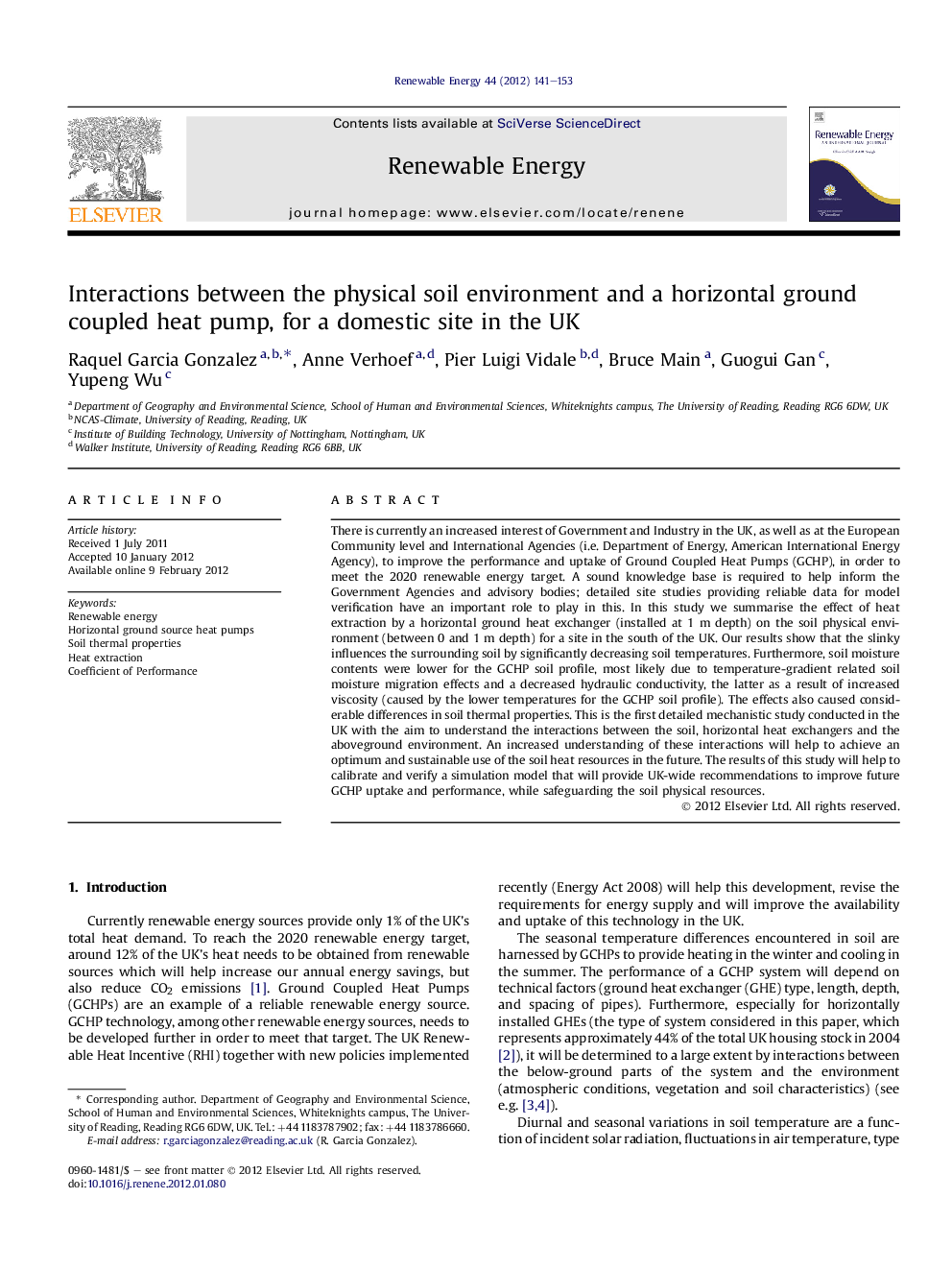| کد مقاله | کد نشریه | سال انتشار | مقاله انگلیسی | نسخه تمام متن |
|---|---|---|---|---|
| 300808 | 512490 | 2012 | 13 صفحه PDF | دانلود رایگان |

There is currently an increased interest of Government and Industry in the UK, as well as at the European Community level and International Agencies (i.e. Department of Energy, American International Energy Agency), to improve the performance and uptake of Ground Coupled Heat Pumps (GCHP), in order to meet the 2020 renewable energy target. A sound knowledge base is required to help inform the Government Agencies and advisory bodies; detailed site studies providing reliable data for model verification have an important role to play in this. In this study we summarise the effect of heat extraction by a horizontal ground heat exchanger (installed at 1 m depth) on the soil physical environment (between 0 and 1 m depth) for a site in the south of the UK. Our results show that the slinky influences the surrounding soil by significantly decreasing soil temperatures. Furthermore, soil moisture contents were lower for the GCHP soil profile, most likely due to temperature-gradient related soil moisture migration effects and a decreased hydraulic conductivity, the latter as a result of increased viscosity (caused by the lower temperatures for the GCHP soil profile). The effects also caused considerable differences in soil thermal properties. This is the first detailed mechanistic study conducted in the UK with the aim to understand the interactions between the soil, horizontal heat exchangers and the aboveground environment. An increased understanding of these interactions will help to achieve an optimum and sustainable use of the soil heat resources in the future. The results of this study will help to calibrate and verify a simulation model that will provide UK-wide recommendations to improve future GCHP uptake and performance, while safeguarding the soil physical resources.
► The ground heat exchanger modified heat and water transport in the soil.
► The GHE influence soil temperatures up to 0.9 m from the slinky installation depth.
► We observed transient soil temperature trend, due to anomalous winter conditions.
► Soil moisture migration effects caused differences in soil thermal properties.
Journal: Renewable Energy - Volume 44, August 2012, Pages 141–153